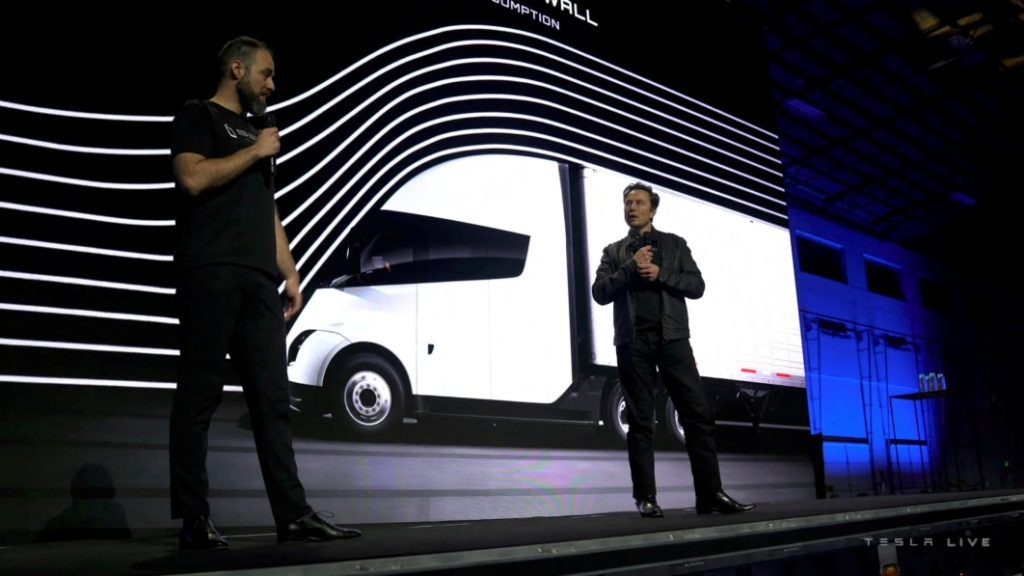Tesla delivers first Semi to Pepsi

DETROIT — Tesla delivered its first electric semis to PepsiCo Thursday, more than three years after Elon Musk said his company would start making the trucks.
The Austin, Texas, company formally delivered the trucks in a “delivery event” at a factory near Reno, Nevada. The event was livestreamed, including on Twitter, which Musk now owns.
Musk drove one of three Tesla Semis in front of a crowd inside the factory. One was white, one was painted with a Pepsi logo, and another with Frito-Lay colors.
PepsiCo, which is based in Purchase, New York, is taking part in a zero-emissions freight project at a Frito-Lay facility in Modesto, California. That project is being funded by a $15.4 million clean-freight technology grant from the California Air Resources Board that includes 15 Tesla battery-electric tractors and other electric- and natural-gas powered trucks.
Electric semis also would be eligible for a federal tax credit of up to $40,000.
At an event in November of 2017 unveiling the Tesla Semi, Musk said production would begin in 2019 and the trucks would be able to follow each other autonomously in a convoy. But during Tesla’s third-quarter earnings conference call in October he said the company’s “Full Self Driving” system is not quite ready to be driverless.
Musk said the truck has a tri-motor powertrain, based on the same one in the Model S/X Plaid. Two of the drive units would free-spin at times on the highway for maximum efficiency, while the other two units would engage when torque and acceleration is called for, say when tackling a grade.
Of the motors, Musk said, “One of them is more powerful than the diesel engine on a semi truck.” (The drive unit in a Tesla Model S Plaid has an output of 1,020 horsepower and 1,050 pound-feet of torque. A diesel semi typically has around 500-600 horsepower, but its torque can range from 1,000 to 2,000 pound-feet.)
Musk said that when the tractor is being driven without a trailer, it’s “like an elephant moving like a cheetah.”
Musk said the truck has a range per charge of 500 miles (800 kilometers) when pulling an 82,000-pound (37,000-kilo) load. The normal load limit for a semi is 80,000 pounds, but Musk said an extra 2,000 pounds is allowed for an electric truck.
Musk said the company successfully completed a 500-mile test of the Semi‘s driving range on Nov. 15 between Fremont and San Diego. The company plans to ramp up Semi production to make 50,000 trucks in 2024 in North America.
Competitors working on hydrogen-powered semis say battery-powered trucks won’t work for long-haul carriers because it will take too long to recharge the huge batteries. Musk said hydrogen isn’t needed for heavy trucking.
Tesla said its other vehicles would used the powertrain in the Semi, and that the company will use the truck in its own supply chain to ship auto components.



